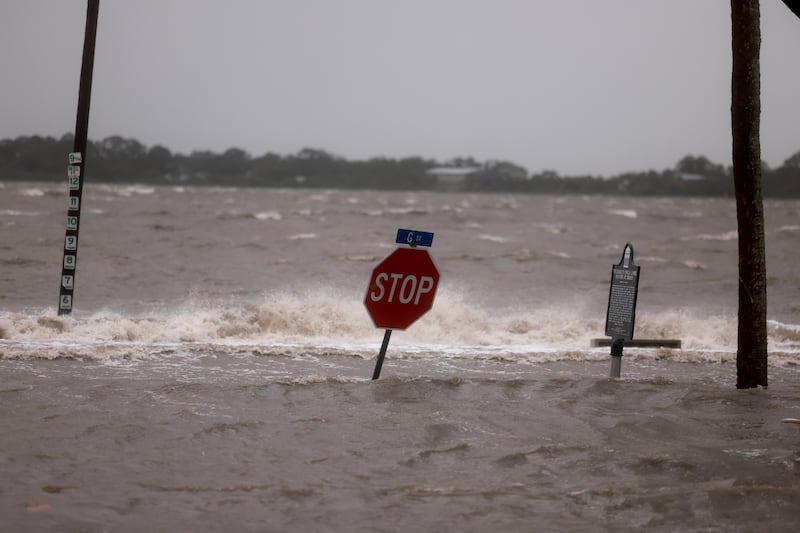Tropical Storm Debby threatens to unleash days of heavy rain and flooding on the US East Coast after slamming into Florida as a hurricane, knocking out power to thousands.
Debby’s top winds dropped to 104km/h, down from 130km/h earlier when it made landfall near Steinhatchee, Florida, the National Hurricane Center said in a 2pm (New York time) advisory. The storm will continue to weaken, but the main danger now is rain, with as much as 30cm expected across a wide area from northern Florida to North Carolina through Saturday as Debby meanders around the region.
The waters are set to inundate roads, damage crops and likely drive people from their homes. Some parts of Georgia and the Carolinas may get as much as 75cm before the storm ends, the hurricane centre said.
“This potentially historic rainfall will likely result in areas of catastrophic flooding,” according to the centre. “This will likely result in areas of considerable flash and urban flooding, with significant river flooding expected.”
READ MORE
The storm has already cut power to almost 300,000 customers across northern Florida and Georgia, according to PowerOutage.us. It’s also grounded more than 1,600 flights around the US, said FlightAware, an airline tracking service.
The governors of Florida, Georgia and South Carolina have all declared emergencies, and President Joe Biden has approved federal help. In the immediate path of the storm, residents along the coast were ordered from their homes and shelters have been opened.
If the storm causes widespread flooding across southern coastal states, particularly around Savannah, Georgia, and Charleston, South Carolina, it could cause up to $1.5 billion (€1.37 billion) in destruction and losses, said Chuck Watson, a disaster modeller at Enki Research.
In 2018, the southeastern US was devastated by torrential rains from Hurricane Florence that killed more than 50 people and damaged infrastructure and agriculture throughout the region.

Even though Debby has lost power, the situation will likely get worse because of how slowly the storm will move through the coastal region, said Tyler Roys, a senior meteorologist at commercial forecaster AccuWeather Inc.
“Going forward now, rain is going to be the big factor basically for the rest of Debby’s life,” Mr Roys said. “We’re very worried about this rain.”
Debby is trapped between high-pressure systems to its northwest and northeast, and this means there won’t be strong steering currents in the atmosphere to move Debby along, said Phil Klotzbach, a hurricane researcher at Colorado State University.
“There’s certainly going to be catastrophic flooding given how slow-moving Debby is going to be,” he said.
The situation will get worse if Debby re-emerges, as is expected, into the Atlantic on Tuesday, because it will be pushing water onshore, essentially blocking rivers from draining into the ocean as the downpours continue inland.
Debby is already the second storm to make landfall in the US this year following Beryl, which struck eastern Texas last month and caused a massive power outage. The Atlantic basin typically doesn’t produce its second system with winds of at least 119km/h until August 26th.
Western Florida in recent years has been battered by storms including Category 5 Michael in 2018 – which was directly responsible for 16 deaths in the US – and Ian, which struck as a Category 4 storm in 2022, leaving more than 160 dead. A year ago, Hurricane Idalia made landfall in the Big Bend area as a Category 3 hurricane.
In addition to Debby, forecasters are watching an area of unsettled weather in the Atlantic that may push into the western Caribbean later this week. It has a 30 per cent chance of becoming the season’s next storm within seven days. – Bloomberg















